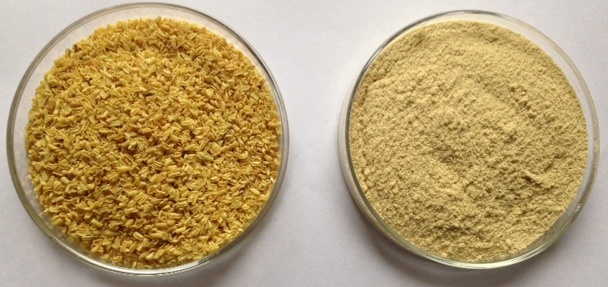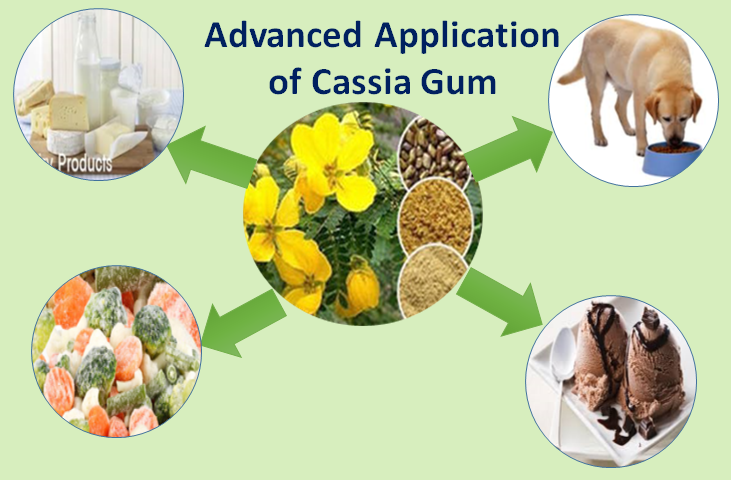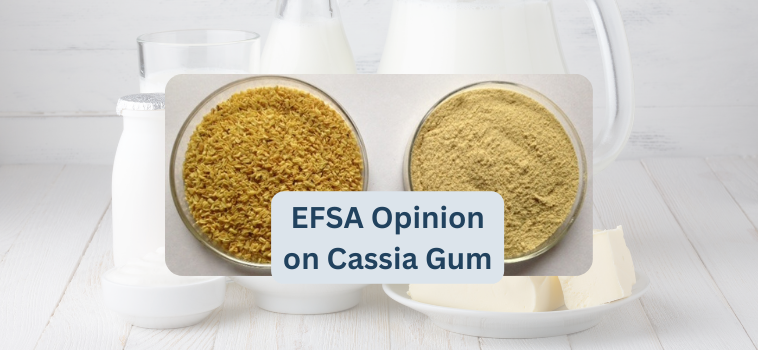Having been researching the industry for some time, I have come across several reports that have mentioned the efficacy of Cassia Gum. These reports also talk about the opinions of the EFSA.
What is meant by Efficacy of Cassia Gum?
Efficacy of cassia gum is defined as the ability of the product to achieve the desired effect. This is achieved by its ability to thicken and stabilize food products. It is a natural additive and is used in food and cosmetics.
Besides thickening food products, cassia gum is also used as a moisture retention agent and an emulsifying agent. It is used in cheese, fermented milk products, sauces, and baked goods. It is also used as a dietary supplement.
Moreover, it is used in a variety of applications such as food stabilization, foam stabilization, adhesion, and texturizing. It also contains bioactive compounds that may improve the health of individuals.
As a natural additive, cassia gum is considered safe to consume. It contains 75% polysaccharides, which makes it an excellent thickening agent. The product also contains alaternin, a phenolic glycoside, which has shown antibacterial effects against certain strains of pseudomonas.
Cassia gum has been approved for use in wet canned pet food. In the U.S., it has also been approved for human food applications.
Food Grade Cassia Gum Powder is an excellent thickener, emulsifier, and moisture retention agent. It is also an effective stabilizer and texturizing agent. It is readily available and can be used in a variety of food and cosmetic products.
Although there are many uses for cassia gum powder, there are some limitations regarding its compatibility with plastic materials. The powder also contains a high amount of galactose side chains, which prevent it from achieving a synergistic gelling effect with anionic polymers. This can be overcome through the use of other gums.
The global market for cassia gum is expected to grow over the next several years. The market is expected to expand due to the growing demand for dairy products and aquaculture. This growth is expected to be driven by urbanization and supportive economic conditions.

What is Market segmentation for Cassia Gum Powder?
Getting a market segmentation for Cassia Gum helps you to get a detailed understanding of the prospects of your business. It helps you identify important factors that will drive market growth. It also helps you to focus on niche markets, which will enable you to expand your business.
The market for Cassia Gum is categorized by geography and industry. Asia Pacific dominates the market by a large margin. The growth of this region is driven by the increasing demand for confectionery products. The market is expected to expand at a CAGR of 4.2% through 2022.
Besides Asia Pacific, the Europe region is also expected to witness strong growth in the market. The market for Cassia Gum is expected to expand at a CAGR of 4.2% through 2022. The demand is expected to increase in the cosmetics segment.
The major players operating in the global market are Altrafine Gums and others. The leading players have adopted various strategies for growth such as expansion, acquisition, partnership, and innovation.
The global market for Cassia Gum is projected to reach USD 14 million by 2028. This market is forecast by region, applications, type, and application industry.
Manufacturing Segmentation of Cassia Gum
Various industries, such as pharmaceuticals, food & beverages, paper, and others are using cassia gum as an emulsifier. This polymer is naturally derived from cassia tora seeds. Its superior viscosity and gelling properties help in preventing the separation of fat and protein in dairy products. It is also used to prepare non-alcoholic drinks.
The market for cassia gum has been segmented based on application and geography. The key markets include the animal food industry, food & beverage industry, and the manufacturing industry. The market is also segmented based on the type and size of cassia gum.
Amongst the key regions, the Asia Pacific region dominates the global cassia gum market. The increase in demand for meat, dairy products, and aquaculture products is expected to drive the market. During the coronavirus pandemic, the demand for meat products has increased significantly. In addition, the demand for confectionery products has also been increased. The market is also expected to grow in the coming years.
The market is highly competitive. The leading players engage in various strategies, such as product innovation, mergers and acquisitions, and expansion. These strategies are expected to drive the market for the coming five years. Moreover, a major share of the market will be accounted by the animal food segment by 2025.
Cassia gum is also used in water treatment facilities. It is also used as an emulsifier, moisture retention agent, and thickening agent in pharmaceuticals. It is also used as an alternative to gelatine jelly in dairy products.
The market for cassia gum is expected to witness a rapid growth in the coming years. In fact, the market for cassia gum is estimated to grow at a CAGR of significant percent in the next five years.
The market has a large number of domestic and multinational players. The leading players engage in various strategies, including product innovation, mergers and acquisitions, expansion, and partnership.

EFSA opinion on Cassia Gum Powder
EFSA has issued an opinion on cassia gum and has re-authorised it as an additive in Animal Nutrition in the European Union. The additive is intended to be used as a technological additive in complete feeds for animals. The additive is used to improve the water retention of yogurt, soup mixes and selected oil free salad dressings. The additive is also used in cheese-cream filling in pastries. In addition to this, it is used as a thickening agent in soup mixes, sausages and selected oil free salad dressings.
The additive contains high molecular weight polysaccharides. It is made from the ground endosperm of seeds. It consists of a linear chain of 1,4-bd-mannopyranose units. The substance can be exposed through inhalation, ingestion or skin exposure. The additive is considered to be a potential skin and respiratory irritant.
The EFSA Panel on Food Additives also issued an opinion on the use of anthraquinones as food additives. The additive is proposed to be used as a gelling agent in complete feeds for animals.
The Bottom Line
Cassia Gum is a polymer with a high molecular weight comprised of galactomannans derived from the kernels of Cassia Tora seeds. It is a normal by-product used in dairy goods, processed meats, processed products, animal and pet feeds, beauty products, medicinal products, and other industrial uses as a thickening, water – retention agent, stabilizing, emulsifying agent, and texturizing agent.

